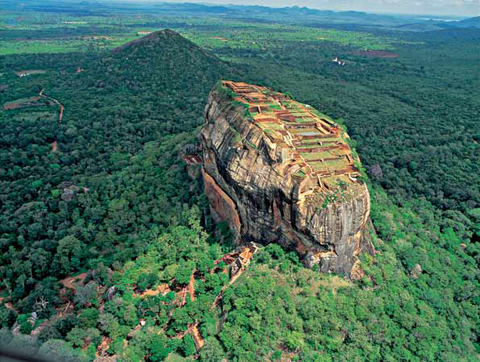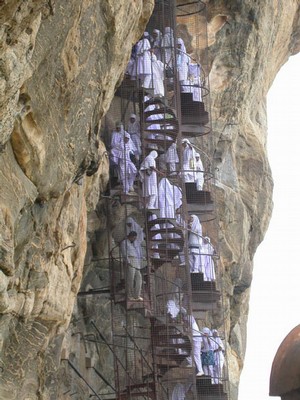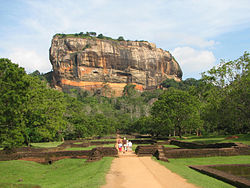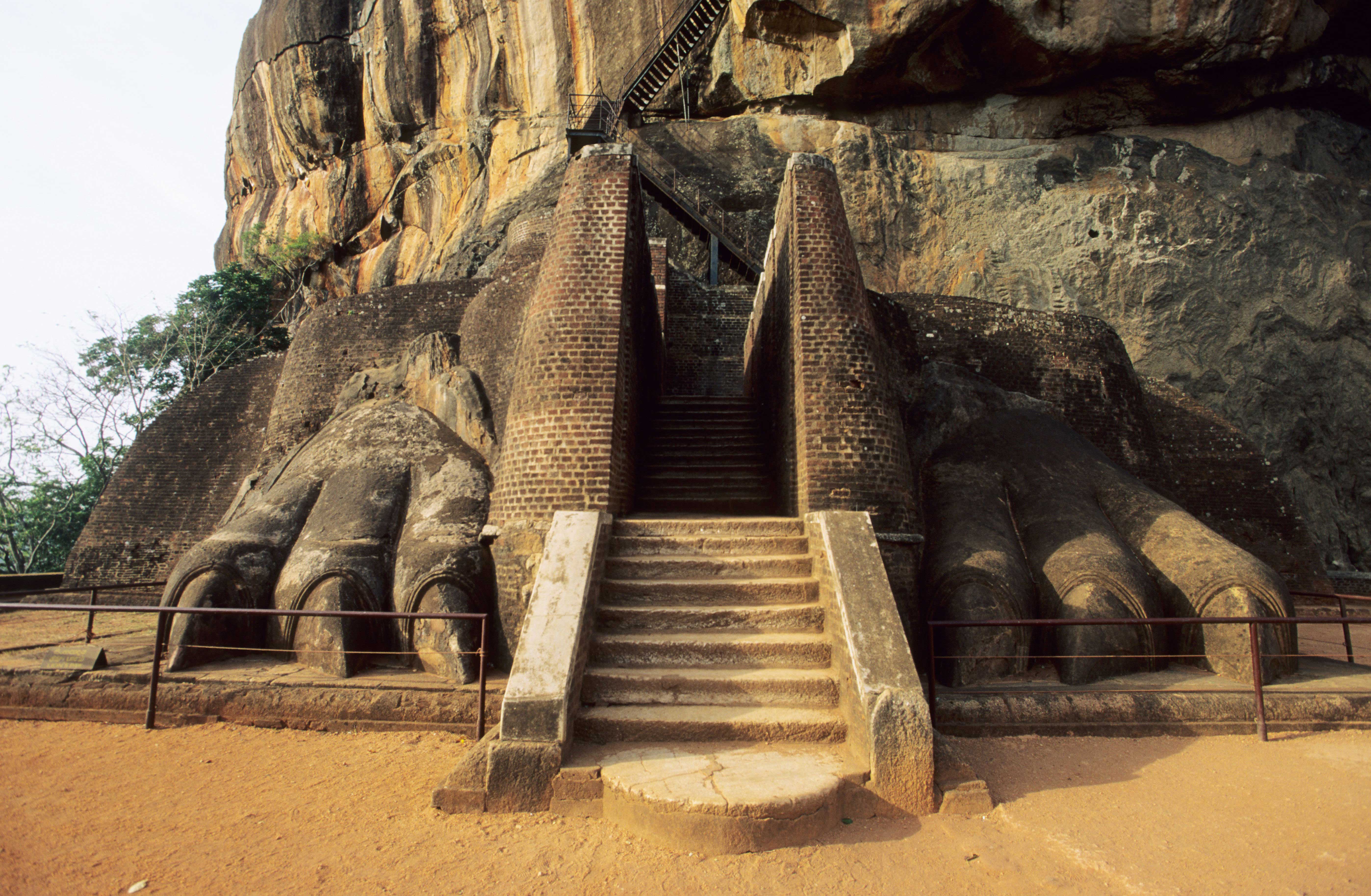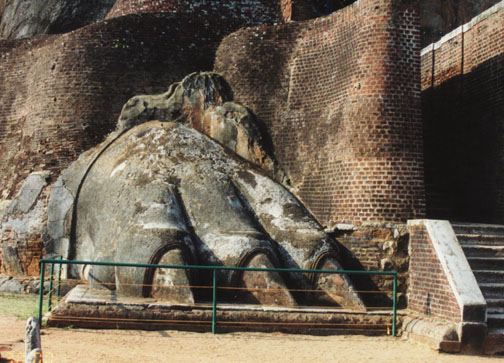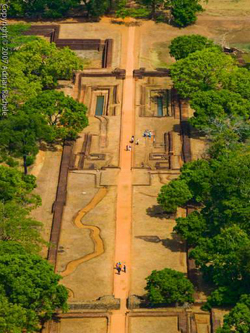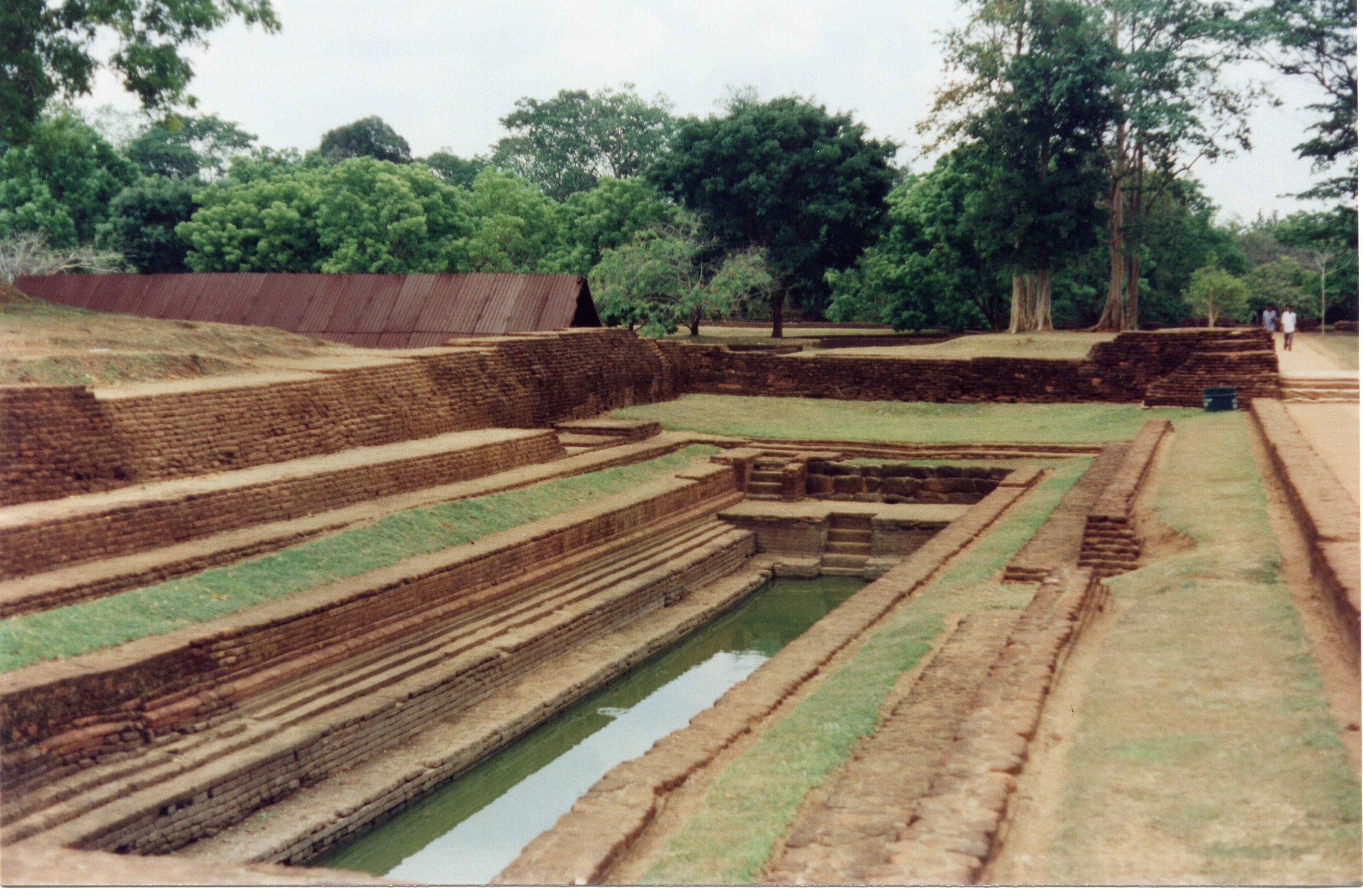Sigiriya
The UNESCO world heritage site
General Information
Other Name: Sinhagiri, , State: North Central, Sri Lanka
Area: 0
Languages Spoken: Sinhali, English
Long Distance Code: +94-11
Importance: A UNESCO world Heritage site
Best Time to Visit: September to March and -
International Access: Dambulla
Description
The name refers to a site of historical and archaeological significance that is dominated by a massive column of rock nearly 200 metres (660 ft) high. According to the ancient Sri Lankan chronicle the Culavamsa, this site was selected by King Kasyapa (477 – 495 CE) for his new capital. He built his palace on the top of this rock and decorated its sides with colourful frescoes. On a small plateau about halfway up the side of this rock he built a gateway in the form of an enormous lion. The name of this place is derived from this structure —Sīhāgiri, the Lion Rock. The capital and the royal palace was abandoned after the king's death. It was used as a Buddhist monastery until the 14th century. The environment around the Sigiriya may have been inhabited since prehistoric times. There is clear evidence that the many rock shelters and caves in the vicinity were occupied by Buddhist monks and ascetics from as early as the 3rd century BCE. The earliest evidence of human habitation at Sigiriya is the Aligala rock shelter to the east of Sigiriya rock, indicating that the area was occupied nearly five thousand years ago during the Mesolithic Period. Sigiriya is considered to be one of the most important urban planning sites of the first millennium, and the site plan is considered very elaborate and imaginative. The plan combined concepts of symmetry and asymmetry to intentionally interlock the man-made geometrical and natural forms of the surroundings. On the west side of the rock lies a park for the royals, laid out on a symmetrical plan; the park contains water-retaining structures, including sophisticated surface/subsurface hydraulic systems, some of which are working today. The south contains a man-made reservoir; these were extensively used from the previous capital of the dry zone of Sri Lanka. Five gates were placed at entrances. The more elaborate western gate is thought to have been reserved for the royals.Location
Location and geographical features Sigiriya is located in the Matale District, Central Province in the Central Province of Sri Lanka. It is within the cultural triangle, which includes five of the eight world heritage sites in Sri Lanka.Climate
The weather in Sigiriya is that of the hot tropics. ... The best time of day to visit Sigiriya is early morning, before the day warms up, or in the late afternoon when then weather cools down. The maximum daytime temperature ranges for 28 to 32 degrees Celsius (82 -90°F).
Located about 2kms to the north of Sigiriya, Pidurangala is often overlooked. This site too has an interesting history closely related to Sigiriya. The area has been occupied on and off for over two thousand years by monks who lived in the caves around the site. It really came into the fore when King Kasyapa (477- 495 AD), moved monks living around Sigiriya to a newly refurbished and enlarged monastery here.
Timings: 8:30 AM – 5:30 PM
Timings: 8:30 AM – 5:30 PM
The spectacular Rock Fortress of Sigiriya, 19 kilometers North East of Dambulla is one of Sri Lanka’s major attractions. The Rock was the Fortress of the "King Kasyapa" who stole the throne from his elder brother who was the rightful heir to the throne. Kasyapa built his fortress in this 182-meter high rock to protect himself from his enemies.
Sigiriya may have been inhabited through prehistoric times. It was used as a rock-shelter mountain monastery from about the 3rd century BC, with caves prepared and donated by devotees to the Buddhist Sangha. The garden and palace were built by Kasyapa 477 - 495 AD. Following Kasyapa''s death it was again a monastery complex up to about the 14th century, after which it was abandoned. The ruins were discovered in 1907 by British Explorer John Still.
Today Sigiriya is famous for its ‘Mirror Wall’, which consists of poems and paragraphs carved by visitors to the rock many years ago and for its magnificent frescoes of shapely be-jewelled maidens in vibrant colours similar to the Ajantha frescoes of India. Sigiriya is in fact, the best-preserved city center in Asia from the first millennium and has been named as a UNESCO world heritage site and 08th Wonder of the World.
Timings: 7am-5pm
Remarks: A spectacular Rock Fortress
Sigiriya may have been inhabited through prehistoric times. It was used as a rock-shelter mountain monastery from about the 3rd century BC, with caves prepared and donated by devotees to the Buddhist Sangha. The garden and palace were built by Kasyapa 477 - 495 AD. Following Kasyapa''s death it was again a monastery complex up to about the 14th century, after which it was abandoned. The ruins were discovered in 1907 by British Explorer John Still.
Today Sigiriya is famous for its ‘Mirror Wall’, which consists of poems and paragraphs carved by visitors to the rock many years ago and for its magnificent frescoes of shapely be-jewelled maidens in vibrant colours similar to the Ajantha frescoes of India. Sigiriya is in fact, the best-preserved city center in Asia from the first millennium and has been named as a UNESCO world heritage site and 08th Wonder of the World.
Timings: 7am-5pm
Remarks: A spectacular Rock Fortress
11 DAYS CLASSIC SRI LANKA / PC-103 (11 Days / 10 Nights)
Colombo-Pinnawela-Dambulla-Sigiriya-Polonnaruwa-Habarana-Sigiriya-Anuradhapura-Aukana-Sigiriya-Kandy-Nanu Oya-Nuwara Eliya-Horton Plains-Nuwara Eliya-Yala-Tissamaharama-Yala-Tissamaharama-Yala-Galle-Colombo
A classical round tour of the Island, covering Ancieant sites, Tea country, Wild life and Beach drive.
Detailed Itinerary
Day 1 : Colombo -Pinnawela -Dambulla-Sigiriya
Day 2 : Sigiriya-Polonnaruwa-Habarana-Sigiriya
Day 3 : Sigiriya-Anuradhapura-Aukana-Sigiriya
Day 4 : Sigiriya-Kandy
Day 5 : Kandy
Day 6 : Kandy-Nanu Oya-Nuwara Eliya
Day 7 : Nuwara Eliya-Horton Plains-Nuwara Eliya
Day 8 : Nuwara Eliya-Yala-Tissamaharama
Day 9 : Yala-Tissamaharama
Day 10 : Tissamaharama-Yala-Galle
Day 11 : Galle-Colombo
Colombo-Pinnawela-Dambulla-Sigiriya-Polonnaruwa-Habarana-Sigiriya-Anuradhapura-Aukana-Sigiriya-Kandy-Nanu Oya-Nuwara Eliya-Horton Plains-Nuwara Eliya-Yala-Tissamaharama-Yala-Tissamaharama-Yala-Galle-Colombo
A classical round tour of the Island, covering Ancieant sites, Tea country, Wild life and Beach drive.
Detailed Itinerary
Day 1 : Colombo -Pinnawela -Dambulla-Sigiriya
Day 2 : Sigiriya-Polonnaruwa-Habarana-Sigiriya
Day 3 : Sigiriya-Anuradhapura-Aukana-Sigiriya
Day 4 : Sigiriya-Kandy
Day 5 : Kandy
Day 6 : Kandy-Nanu Oya-Nuwara Eliya
Day 7 : Nuwara Eliya-Horton Plains-Nuwara Eliya
Day 8 : Nuwara Eliya-Yala-Tissamaharama
Day 9 : Yala-Tissamaharama
Day 10 : Tissamaharama-Yala-Galle
Day 11 : Galle-Colombo
Sigiriya, Sri Lanka Tours

